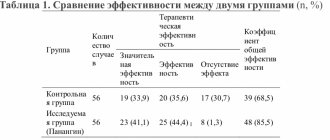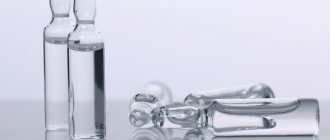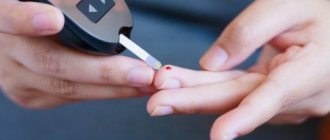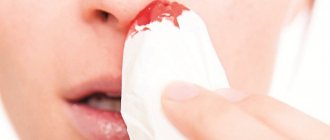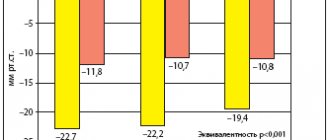make an appointment with a doctor!
Most IVF protocols include a course of hormonal injections to stimulate the ovaries, prepare the woman’s body for embryo implantation, and maintain pregnancy after the procedure. As a rule, injections are performed by a doctor when the patient visits a medical facility or on an outpatient basis. However, this is not always convenient or possible - for example, if the woman works or is far from the clinic. Such injections can be performed independently, but the patient must clearly understand how to give injections during IVF so that they are as effective and safe as possible.
Description
The active ingredient of Gonal-F is recombinant FSH (follitropin alfa). Under natural conditions, the hormone promotes the growth and development of follicles in the ovaries. Recombinant FSH of non-human origin is created in the laboratory using genetic engineering methods.
Depending on the concentration of the active substance, Gonal-F is available in two forms, which differ in the method of application. Your doctor will prescribe the most appropriate type of medication and select the right dose.
Today Gonal-F is available in the following dosages:
- 75 IU;
- 300 IU;
- 450 IU;
- 900 IU;
- 1050 IU.
The choice of dose depends on what assisted reproductive technology is used to treat infertility, as well as on the individual characteristics of the patient.
When to start treatment with Gonal-f
Treatment with Gonal-F should be started under the supervision of a fertility specialist.
The most common indications for prescribing the drug:
- anovulation - in polycystic ovary syndrome and other diseases characterized by the absence of ovulation, provided that treatment with clomiphene citrate was ineffective;
- stimulation of superovulation in the IVF program;
- hypogonaotropic hypogonadism - to stimulate spermatogenesis in men who have problems with the production of germ cells.
The final decision regarding the advisability of treatment with Gonal-F is made by a reproductologist. He carefully weighs all the advantages and possible risks, takes into account the clinical picture of the disease that caused infertility and the results of additional examination of the patient, as well as a number of factors affecting the functioning of the woman’s gonads.
Who is suitable for stimulation?
Ovulation induction is prescribed if:
- The woman has a reduced ovarian reserve.
- The patient is over 35 years old.
- It is necessary to obtain a large number of oocytes.
- Menstrual function is disrupted (natural cycle is too long or short).
- Hypo- or hyperestrogenism has been established, and the quality of the endometrium has been reduced.
- The patient does not ovulate in the natural cycle (or occurs, but late).
- The follicles do not grow on their own (for example, due to the fact that the woman has previously had ovarian surgery).
- The implantation window does not open due to an imbalance of estrogen and progesterone.
- There have been previous failed protocols in natural cycles.
Precautionary measures
Before starting treatment with Gonal-F
, you need to tell your doctor if you are allergic to the active substance or one of the excipients of the drug, or if you have allergic reactions to other drugs or foods. Be sure to tell your doctor your medical history, especially if there are concomitant pathologies - this will help avoid unwanted side effects.
Patients with hypersensitivity to non-FSH gonadotropins are at high risk of allergic cross-reaction. For this reason, the first injection should be done under the direct supervision of a doctor.
Self-administration of Gonal-F should only be trusted to those patients who are very well motivated and properly trained. The patient should have free access to expert advice. Particular attention should be paid to the instructions for using the pre-filled pen.
How to use
Despite the fact that Gonal-F is available in different doses, its preparation and use are the same in all cases. If a woman is undergoing an IVF cycle, the medical center staff will teach her step by step how to administer the drug.
Gonal-F injection
To use the medicine correctly you should:
- dissolve the product by mixing the liquid with the powder until the solution becomes homogeneous, without suspended particles - the drug cannot be used if it contains flakes, grains and other impurities;
- change the dilution needle to a hypodermic needle and set the desired dose;
- Before giving the injection, treat the desired area with an alcohol swab;
- administer Gonal-F subcutaneously or intramuscularly, in accordance with the doctor’s recommendations;
- remove the needle, press a cotton swab moistened with alcohol to the injection site and massage lightly - this will promote better absorption of the medicine;
- Dispose of needles and syringe according to instructions.
Gonal-F should be administered once a day, at the same time, every day. To reduce the negative impact on the skin, the injection site should be changed. If you miss a shot or get the wrong dose, contact your doctor immediately.
Syringe pen Gonal-F
To facilitate the administration of the drug and for the purpose of precise dosage, scientists have developed a syringe pen that clearly regulates the dose of the drug. Today we will tell you about the features of using such a pen and how to use it correctly.
So, in order to figure out how to correctly set the dosage in pens, I would like to briefly talk about its basic scheme. The cartridge with the drug is already inserted into the pen, so you do not have to do it yourself. In order to use it, you need to remove the cap from the pen and connect a sterile needle to it. For each manipulation, an individual needle is taken, the tightness of which must not be broken. If it becomes depressurized, it is not recommended to use it. After the needle is connected to the cartridge, the syringe pen must be lifted vertically to remove air bubbles and scroll the pen body to the 25 UNIT mark in the window. Then remove the inner cap from the needle and lightly tap the syringe to shake off the air, and then press the injection button. The number 0 in the window on the handle will indicate that the air has been removed.
On the prescription sheet, the doctor notes the drug administration schedule - when and how much it costs to administer gonal, you look at the date and dose of the drug that you need. Using the injection button, make turns until the number assigned to you appears in the window. Under no circumstances should you push, press or pull up on the injection button. After making sure that the dose of the drug has been administered correctly, prepare the injection site. The best place for injection will be the anterior abdominal wall or thigh. After treating the injection site with alcohol, give a few seconds for the alcohol to evaporate and carry out the manipulation. In order for the injection to be painless, the woman gathers the subcutaneous tissue into a fold and pierces it all the way so that the needle goes completely under the skin. Then press the injection button and do not remove the needle for 10 seconds so that the drug completely enters the subcutaneous tissue. After removing the needle, apply a sterile napkin and massage the injection site.
The used needle must be disposed of, and the syringe pen must be closed and stored at room temperature in places away from children and the sun for 28 days.
How to use bonuses remaining in pens? Many women, after a course of treatment, note that there is some drug left in the syringe and decide that somewhere they made a mistake and panic begins. In fact, everything is not like that at all. The fact is that the dosage of drug administration in each specific case is different, so some may have 100 IU left, while others may have more or less IU. What to do about it? There is no need to panic, as it is easy to calculate how much of the drug is needed for the subsequent injection, which is placed in a new pen syringe and administered.
The doctor controls the stimulation of ovulation and the growth of follicles not only using the ultrasound method, but also using the hormonal method.
What anticoagulants are there?
Many factors are responsible for blood clotting and the breakdown of clots. Both processes occur simultaneously, creating a balance that allows blood to flow freely and at the same time stops bleeding in the event of vessel damage. This process is called hemostasis. There are also several classes of anticoagulants that differ in their mechanism of action. These include:
- Heparin is a natural anticoagulant produced in the liver and is administered subcutaneously or intravenously, although there are also gels for application to the skin;
- factor Xa inhibitors - Rivaroxaban, Apixaban, Edoxaban (sold under the names Xarelto, Eliquis);
- vitamin K antagonists - Acenocoumarol and Warfarin, they block the production of important blood clotting factors in the liver;
- direct thrombin inhibitors - Dabigatran (Pradaxa).
For coronavirus, various drugs classified as anticoagulants may be prescribed at the discretion of the specialist.
Dosage
The dose of Gonal-F varies depending on the specific case and the purpose of treatment.
Dose of the drug for artificial insemination
In artificial insemination cycles, doctors practice mild ovarian stimulation. The goal of treatment is not to stimulate the ovaries, but to induce ovulation. In order for the procedure to be successful, it is enough to obtain 2-3 mature follicles.
The dose of Gonal-F for artificial insemination is 75-150 IU. Rarely does the daily dose exceed 225 IU.
Dosage in the IVF program
Unlike artificial insemination cycles, IVF patients undergo controlled ovarian stimulation. The doctor's goal in this case is to obtain 8-15 mature follicles with eggs, which can be collected using a puncture.
The dose of the drug in IVF cycles can range from 150 to 450 IU per day.
Regardless of your fertility treatment, your doctor will schedule a series of follow-up visits to assess estradiol levels and monitor follicle growth. The administered dose may be changed depending on the results of the examination.
Contraindications for use
Gonal-F should not be used if you are hypersensitive to follitropin alfa, FSH or any of the excipients of the drug.
In addition, the drug is contraindicated in the following cases:
- tumors of the hypothalamus or pituitary gland;
- large ovarian cysts not caused by PCOS;
- vaginal bleeding of unknown origin;
- cancer of the reproductive system or mammary glands;
- period of lactation or pregnancy;
- with primary ovarian or testicular failure;
- developmental anomalies of the female reproductive organs incompatible with pregnancy;
- uterine fibroids, which prevents pregnancy.
Gonal-F should not be used to treat children and the elderly.
What is human chorionic gonadotropin?
The abbreviation hCG stands for human chorionic gonadotropin. Its structure is a combination of alpha and beta units. Alpha is similar in structure to TSH and FSH, but beta is unique and it is the one that affects the pregnancy rate during the test.
Beta units are produced early in pregnancy, up to the 10th week. At week 11, their number increases sharply, and this growth indicates the active development of the embryo and the normal course of pregnancy. Then the indicators stop increasing and remain stable until the baby is born. Focusing on the level of the hormone, the increase and decrease in its volume, doctors make assumptions and conclusions about the health and activity of the fetus, the presence or absence of pathologies and anomalies, as well as the general course of pregnancy.
A pregnant woman should undergo examinations that show not only the level of hCG, but also the body’s synthesis of antibodies that oppose the hormone. They interfere with the normal functioning of the protein and lower the level of placental hormones. A normal level of hCG favors the preservation of the fetus and dulls the body’s immune functions, excluding rejection. An analysis for the beta component can be prescribed to a non-pregnant woman and even a man for a preliminary assessment of the presence of hormone-dependent tumors.
Monitoring of hCG levels is carried out through regular examinations with comments from the leading physician, as well as through independent comparison of the results with the hCG table.
Interactions and side effects
No clinically significant drug interactions have been reported during treatment with Gonal-F. GnRH may interact with the drug, increasing the dose required for an adequate ovarian response. When using the drug, local reactions are very rarely possible, such as redness, irritation, soreness, swelling of soft tissues at the injection site, headaches or the development of ovarian cysts. Severe side effects, which occur less frequently than 1/10,000, include ovarian hyperstimulation syndrome, allergies or episodes of thromboembolism.
Area of application of injections in the abdomen
For diabetes, the most suitable place for injections is the subcutaneous tissue on the abdomen.
A subcutaneous injection is a method of introducing medications into the layer located between the skin and muscles. This procedure has a limited scope of application. An injection into the navel is performed using the following drugs:
- Anticoagulants. The drugs thin the blood and prevent the formation of blood clots.
- For the treatment of rabies. In this case, a series of injections is given. When administered intramuscularly, they can cause muscle paralysis. If injections are given using an intradermal technique, such side effects are not observed, since the drug is distributed throughout the body gradually.
- Triggers of ovulation. Used to stimulate the process of egg maturation. Carrying out such manipulation is necessary when performing an IVF procedure or for a controlled pregnancy.
- For the treatment of diabetes mellitus. Insulin into the abdomen is the best way to administer this medication.
- Products for burning subcutaneous fat for weight loss.
The subcutaneous injection method is used in cardiology, phlebology, endocrinology, gynecology and other areas of medicine. The procedures are actively used in cosmetology.
Injections can have therapeutic and preventive purposes, but only a doctor can prescribe them based on the diagnosis performed and the observed clinical picture.



